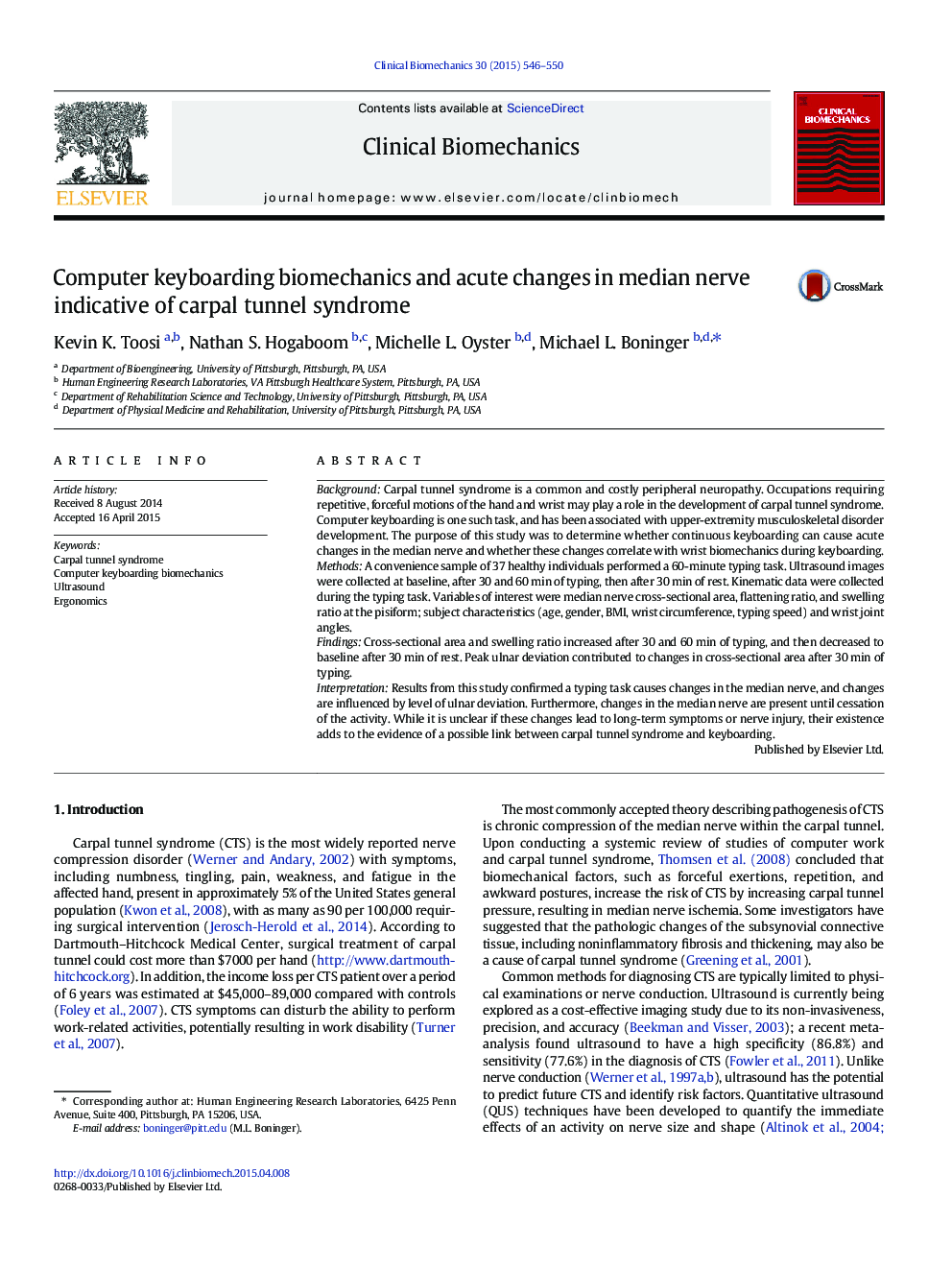| Article ID | Journal | Published Year | Pages | File Type |
|---|---|---|---|---|
| 4050236 | Clinical Biomechanics | 2015 | 5 Pages |
•Median nerve cross-sectional area and swelling ratio increased after 30 and 60 min of typing.•Responses to typing were greater in those who approached greater peak angles of ulnar deviation.•Nerve size at 60 min reverted to baseline size after 30 min of rest.
BackgroundCarpal tunnel syndrome is a common and costly peripheral neuropathy. Occupations requiring repetitive, forceful motions of the hand and wrist may play a role in the development of carpal tunnel syndrome. Computer keyboarding is one such task, and has been associated with upper-extremity musculoskeletal disorder development. The purpose of this study was to determine whether continuous keyboarding can cause acute changes in the median nerve and whether these changes correlate with wrist biomechanics during keyboarding.MethodsA convenience sample of 37 healthy individuals performed a 60-minute typing task. Ultrasound images were collected at baseline, after 30 and 60 min of typing, then after 30 min of rest. Kinematic data were collected during the typing task. Variables of interest were median nerve cross-sectional area, flattening ratio, and swelling ratio at the pisiform; subject characteristics (age, gender, BMI, wrist circumference, typing speed) and wrist joint angles.FindingsCross-sectional area and swelling ratio increased after 30 and 60 min of typing, and then decreased to baseline after 30 min of rest. Peak ulnar deviation contributed to changes in cross-sectional area after 30 min of typing.InterpretationResults from this study confirmed a typing task causes changes in the median nerve, and changes are influenced by level of ulnar deviation. Furthermore, changes in the median nerve are present until cessation of the activity. While it is unclear if these changes lead to long-term symptoms or nerve injury, their existence adds to the evidence of a possible link between carpal tunnel syndrome and keyboarding.
